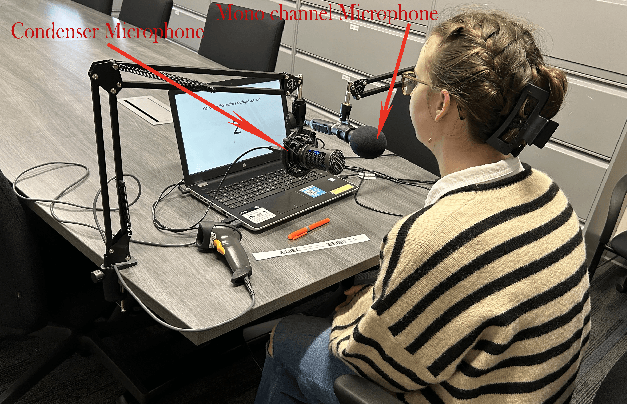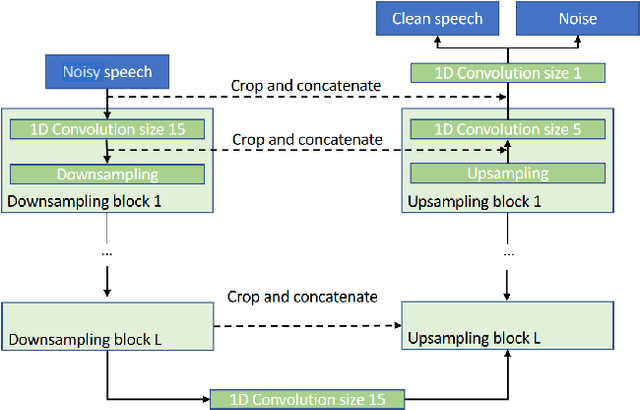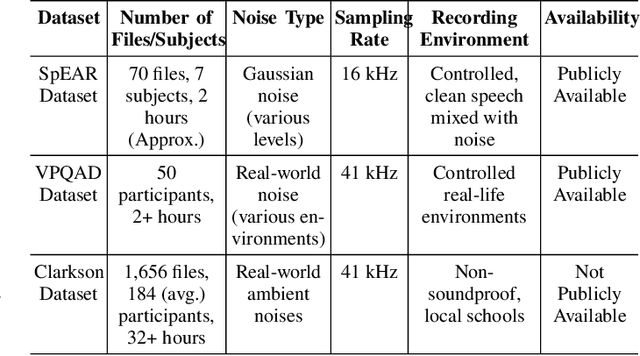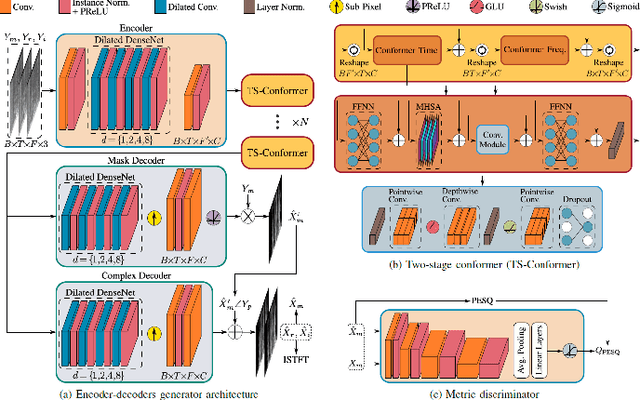speech recognition
Speech recognition is the task of identifying words spoken aloud, analyzing the voice and language, and accurately transcribing the words.
Papers and Code
(SimPhon Speech Test): A Data-Driven Method for In Silico Design and Validation of a Phonetically Balanced Speech Test
Jun 13, 2025Traditional audiometry often provides an incomplete characterization of the functional impact of hearing loss on speech understanding, particularly for supra-threshold deficits common in presbycusis. This motivates the development of more diagnostically specific speech perception tests. We introduce the Simulated Phoneme Speech Test (SimPhon Speech Test) methodology, a novel, multi-stage computational pipeline for the in silico design and validation of a phonetically balanced minimal-pair speech test. This methodology leverages a modern Automatic Speech Recognition (ASR) system as a proxy for a human listener to simulate the perceptual effects of sensorineural hearing loss. By processing speech stimuli under controlled acoustic degradation, we first identify the most common phoneme confusion patterns. These patterns then guide the data-driven curation of a large set of candidate word pairs derived from a comprehensive linguistic corpus. Subsequent phases involving simulated diagnostic testing, expert human curation, and a final, targeted sensitivity analysis systematically reduce the candidates to a final, optimized set of 25 pairs (the SimPhon Speech Test-25). A key finding is that the diagnostic performance of the SimPhon Speech Test-25 test items shows no significant correlation with predictions from the standard Speech Intelligibility Index (SII), suggesting the SimPhon Speech Test captures perceptual deficits beyond simple audibility. This computationally optimized test set offers a significant increase in efficiency for audiological test development, ready for initial human trials.
Uncovering the Functional Roles of Nonlinearity in Memory
Jun 09, 2025



Memory and long-range temporal processing are core requirements for sequence modeling tasks across natural language processing, time-series forecasting, speech recognition, and control. While nonlinear recurrence has long been viewed as essential for enabling such mechanisms, recent work suggests that linear dynamics may often suffice. In this study, we go beyond performance comparisons to systematically dissect the functional role of nonlinearity in recurrent networks--identifying both when it is computationally necessary, and what mechanisms it enables. We use Almost Linear Recurrent Neural Networks (AL-RNNs), which allow fine-grained control over nonlinearity, as both a flexible modeling tool and a probe into the internal mechanisms of memory. Across a range of classic sequence modeling tasks and a real-world stimulus selection task, we find that minimal nonlinearity is not only sufficient but often optimal, yielding models that are simpler, more robust, and more interpretable than their fully nonlinear or linear counterparts. Our results provide a principled framework for selectively introducing nonlinearity, bridging dynamical systems theory with the functional demands of long-range memory and structured computation in recurrent neural networks, with implications for both artificial and biological neural systems.
Enabling automatic transcription of child-centered audio recordings from real-world environments
Jun 13, 2025Longform audio recordings obtained with microphones worn by children-also known as child-centered daylong recordings-have become a standard method for studying children's language experiences and their impact on subsequent language development. Transcripts of longform speech audio would enable rich analyses at various linguistic levels, yet the massive scale of typical longform corpora prohibits comprehensive manual annotation. At the same time, automatic speech recognition (ASR)-based transcription faces significant challenges due to the noisy, unconstrained nature of real-world audio, and no existing study has successfully applied ASR to transcribe such data. However, previous attempts have assumed that ASR must process each longform recording in its entirety. In this work, we present an approach to automatically detect those utterances in longform audio that can be reliably transcribed with modern ASR systems, allowing automatic and relatively accurate transcription of a notable proportion of all speech in typical longform data. We validate the approach on four English longform audio corpora, showing that it achieves a median word error rate (WER) of 0% and a mean WER of 18% when transcribing 13% of the total speech in the dataset. In contrast, transcribing all speech without any filtering yields a median WER of 52% and a mean WER of 51%. We also compare word log-frequencies derived from the automatic transcripts with those from manual annotations and show that the frequencies correlate at r = 0.92 (Pearson) for all transcribed words and r = 0.98 for words that appear at least five times in the automatic transcripts. Overall, the work provides a concrete step toward increasingly detailed automated linguistic analyses of child-centered longform audio.
Machine Unlearning for Robust DNNs: Attribution-Guided Partitioning and Neuron Pruning in Noisy Environments
Jun 13, 2025Deep neural networks (DNNs) have achieved remarkable success across diverse domains, but their performance can be severely degraded by noisy or corrupted training data. Conventional noise mitigation methods often rely on explicit assumptions about noise distributions or require extensive retraining, which can be impractical for large-scale models. Inspired by the principles of machine unlearning, we propose a novel framework that integrates attribution-guided data partitioning, discriminative neuron pruning, and targeted fine-tuning to mitigate the impact of noisy samples. Our approach employs gradient-based attribution to probabilistically distinguish high-quality examples from potentially corrupted ones without imposing restrictive assumptions on the noise. It then applies regression-based sensitivity analysis to identify and prune neurons that are most vulnerable to noise. Finally, the resulting network is fine-tuned on the high-quality data subset to efficiently recover and enhance its generalization performance. This integrated unlearning-inspired framework provides several advantages over conventional noise-robust learning approaches. Notably, it combines data-level unlearning with model-level adaptation, thereby avoiding the need for full model retraining or explicit noise modeling. We evaluate our method on representative tasks (e.g., CIFAR-10 image classification and speech recognition) under various noise levels and observe substantial gains in both accuracy and efficiency. For example, our framework achieves approximately a 10% absolute accuracy improvement over standard retraining on CIFAR-10 with injected label noise, while reducing retraining time by up to 47% in some settings. These results demonstrate the effectiveness and scalability of the proposed approach for achieving robust generalization in noisy environments.
EmoNet-Voice: A Fine-Grained, Expert-Verified Benchmark for Speech Emotion Detection
Jun 11, 2025The advancement of text-to-speech and audio generation models necessitates robust benchmarks for evaluating the emotional understanding capabilities of AI systems. Current speech emotion recognition (SER) datasets often exhibit limitations in emotional granularity, privacy concerns, or reliance on acted portrayals. This paper introduces EmoNet-Voice, a new resource for speech emotion detection, which includes EmoNet-Voice Big, a large-scale pre-training dataset (featuring over 4,500 hours of speech across 11 voices, 40 emotions, and 4 languages), and EmoNet-Voice Bench, a novel benchmark dataset with human expert annotations. EmoNet-Voice is designed to evaluate SER models on a fine-grained spectrum of 40 emotion categories with different levels of intensities. Leveraging state-of-the-art voice generation, we curated synthetic audio snippets simulating actors portraying scenes designed to evoke specific emotions. Crucially, we conducted rigorous validation by psychology experts who assigned perceived intensity labels. This synthetic, privacy-preserving approach allows for the inclusion of sensitive emotional states often absent in existing datasets. Lastly, we introduce Empathic Insight Voice models that set a new standard in speech emotion recognition with high agreement with human experts. Our evaluations across the current model landscape exhibit valuable findings, such as high-arousal emotions like anger being much easier to detect than low-arousal states like concentration.
Hybrid Deep Learning and Signal Processing for Arabic Dialect Recognition in Low-Resource Settings
Jun 26, 2025Arabic dialect recognition presents a significant challenge in speech technology due to the linguistic diversity of Arabic and the scarcity of large annotated datasets, particularly for underrepresented dialects. This research investigates hybrid modeling strategies that integrate classical signal processing techniques with deep learning architectures to address this problem in low-resource scenarios. Two hybrid models were developed and evaluated: (1) Mel-Frequency Cepstral Coefficients (MFCC) combined with a Convolutional Neural Network (CNN), and (2) Discrete Wavelet Transform (DWT) features combined with a Recurrent Neural Network (RNN). The models were trained on a dialect-filtered subset of the Common Voice Arabic dataset, with dialect labels assigned based on speaker metadata. Experimental results demonstrate that the MFCC + CNN architecture achieved superior performance, with an accuracy of 91.2% and strong precision, recall, and F1-scores, significantly outperforming the Wavelet + RNN configuration, which achieved an accuracy of 66.5%. These findings highlight the effectiveness of leveraging spectral features with convolutional models for Arabic dialect recognition, especially when working with limited labeled data. The study also identifies limitations related to dataset size, potential regional overlaps in labeling, and model optimization, providing a roadmap for future research. Recommendations for further improvement include the adoption of larger annotated corpora, integration of self-supervised learning techniques, and exploration of advanced neural architectures such as Transformers. Overall, this research establishes a strong baseline for future developments in Arabic dialect recognition within resource-constrained environments.
Speak2Sign3D: A Multi-modal Pipeline for English Speech to American Sign Language Animation
Jul 09, 2025Helping deaf and hard-of-hearing people communicate more easily is the main goal of Automatic Sign Language Translation. Although most past research has focused on turning sign language into text, doing the reverse, turning spoken English into sign language animations, has been largely overlooked. That's because it involves multiple steps, such as understanding speech, translating it into sign-friendly grammar, and generating natural human motion. In this work, we introduce a complete pipeline that converts English speech into smooth, realistic 3D sign language animations. Our system starts with Whisper to translate spoken English into text. Then, we use a MarianMT machine translation model to translate that text into American Sign Language (ASL) gloss, a simplified version of sign language that captures meaning without grammar. This model performs well, reaching BLEU scores of 0.7714 and 0.8923. To make the gloss translation more accurate, we also use word embeddings such as Word2Vec and FastText to understand word meanings. Finally, we animate the translated gloss using a 3D keypoint-based motion system trained on Sign3D-WLASL, a dataset we created by extracting body, hand, and face key points from real ASL videos in the WLASL dataset. To support the gloss translation stage, we also built a new dataset called BookGlossCorpus-CG, which turns everyday English sentences from the BookCorpus dataset into ASL gloss using grammar rules. Our system stitches everything together by smoothly interpolating between signs to create natural, continuous animations. Unlike previous works like How2Sign and Phoenix-2014T that focus on recognition or use only one type of data, our pipeline brings together audio, text, and motion in a single framework that goes all the way from spoken English to lifelike 3D sign language animation.
A Comparative Evaluation of Deep Learning Models for Speech Enhancement in Real-World Noisy Environments
Jun 17, 2025



Speech enhancement, particularly denoising, is vital in improving the intelligibility and quality of speech signals for real-world applications, especially in noisy environments. While prior research has introduced various deep learning models for this purpose, many struggle to balance noise suppression, perceptual quality, and speaker-specific feature preservation, leaving a critical research gap in their comparative performance evaluation. This study benchmarks three state-of-the-art models Wave-U-Net, CMGAN, and U-Net, on diverse datasets such as SpEAR, VPQAD, and Clarkson datasets. These models were chosen due to their relevance in the literature and code accessibility. The evaluation reveals that U-Net achieves high noise suppression with SNR improvements of +71.96% on SpEAR, +64.83% on VPQAD, and +364.2% on the Clarkson dataset. CMGAN outperforms in perceptual quality, attaining the highest PESQ scores of 4.04 on SpEAR and 1.46 on VPQAD, making it well-suited for applications prioritizing natural and intelligible speech. Wave-U-Net balances these attributes with improvements in speaker-specific feature retention, evidenced by VeriSpeak score gains of +10.84% on SpEAR and +27.38% on VPQAD. This research indicates how advanced methods can optimize trade-offs between noise suppression, perceptual quality, and speaker recognition. The findings may contribute to advancing voice biometrics, forensic audio analysis, telecommunication, and speaker verification in challenging acoustic conditions.
From Flat to Feeling: A Feasibility and Impact Study on Dynamic Facial Emotions in AI-Generated Avatars
Jun 16, 2025



Dynamic facial emotion is essential for believable AI-generated avatars; however, most systems remain visually inert, limiting their utility in high-stakes simulations such as virtual training for investigative interviews with abused children. We introduce and evaluate a real-time architecture fusing Unreal Engine 5 MetaHuman rendering with NVIDIA Omniverse Audio2Face to translate vocal prosody into high-fidelity facial expressions on photorealistic child avatars. We implemented a distributed two-PC setup that decouples language processing and speech synthesis from GPU-intensive rendering, designed to support low-latency interaction in desktop and VR environments. A between-subjects study ($N=70$) using audio+visual and visual-only conditions assessed perceptual impacts as participants rated emotional clarity, facial realism, and empathy for two avatars expressing joy, sadness, and anger. Results demonstrate that avatars could express emotions recognizably, with sadness and joy achieving high identification rates. However, anger recognition significantly dropped without audio, highlighting the importance of congruent vocal cues for high-arousal emotions. Interestingly, removing audio boosted perceived facial realism, suggesting that audiovisual desynchrony remains a key design challenge. These findings confirm the technical feasibility of generating emotionally expressive avatars and provide guidance for improving non-verbal communication in sensitive training simulations.
Robust Unsupervised Adaptation of a Speech Recogniser Using Entropy Minimisation and Speaker Codes
Jun 12, 2025Speech recognisers usually perform optimally only in a specific environment and need to be adapted to work well in another. For adaptation to a new speaker, there is often too little data for fine-tuning to be robust, and that data is usually unlabelled. This paper proposes a combination of approaches to make adaptation to a single minute of data robust. First, instead of estimating the adaptation parameters with cross-entropy on a single error-prone hypothesis or "pseudo-label", this paper proposes a novel loss function, the conditional entropy over complete hypotheses. Using multiple hypotheses makes adaptation more robust to errors in the initial recognition. Second, a "speaker code" characterises a speaker in a vector short enough that it requires little data to estimate. On a far-field noise-augmented version of Common Voice, the proposed scheme yields a 20% relative improvement in word error rate on one minute of adaptation data, increasing on 10 minutes to 29%.
 Add to Chrome
Add to Chrome Add to Firefox
Add to Firefox Add to Edge
Add to Edge